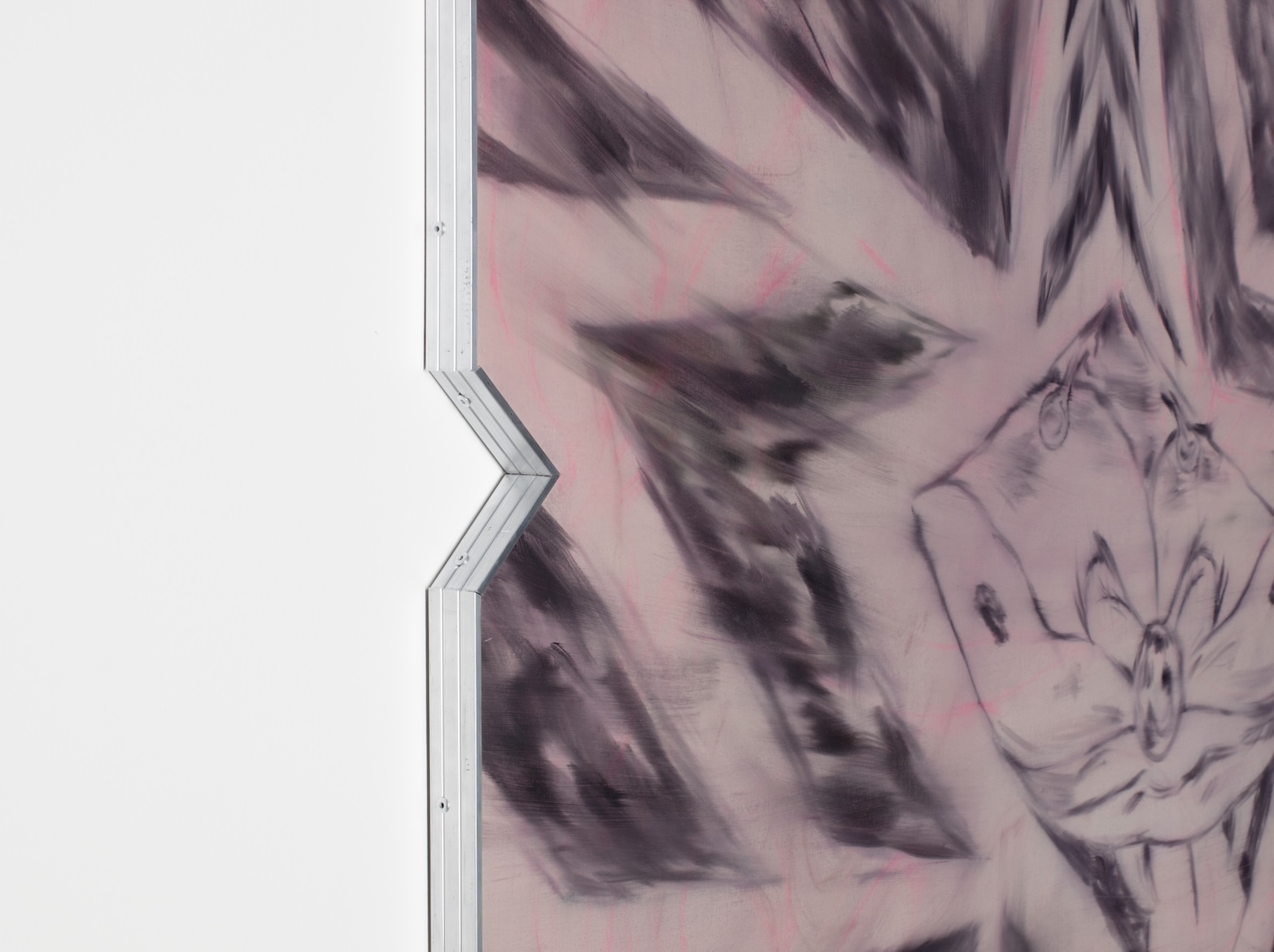
Review
Estás aquí (you’re here): Scott Galván at Proyectos Multipropósito
by Verana Codina
Reading time
3 min
… y las mariposas volaban de flor de flor
— Joan Sebastian
Scott Galván is an inventor who paints. He has created the first machine capable of traveling at the speed of light. It’s a hybrid—part train, part caterpillar—occupying the vacant fourteenth floor of a corporate tower on Paseo de la Reforma, now the new home of Proyectos Multipropósito. This creature was evicted from the depths of the city and brought to the heights to be exhibited and admired during this art week.
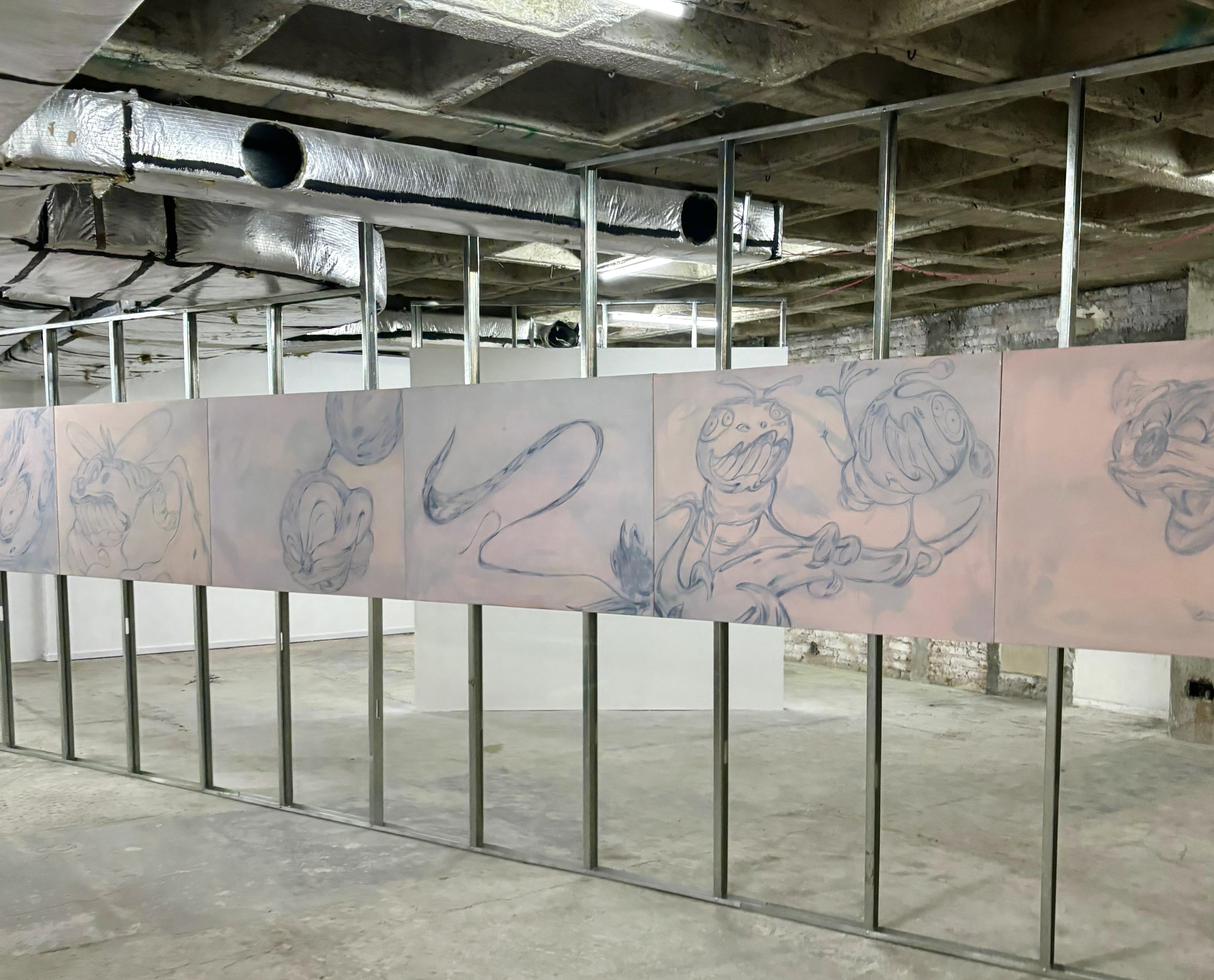
It mutates along the linearity that follows the movement of the eye. Each painting serves as a window that allows us to witness its metamorphosis. We observe it as we board it; we are inside, seated in the third car from left to right. The perfectly aligned row of canvases resembles slides in a projector—the faster you flip through them, the stronger the optical illusion of turning a fixed and static thing into an animated. From caterpillar to chrysalis to butterfly, the cartoonish forms merge into a blend of mechanical play, a Chinese dragon, and a violet-winged lepidopteran. In Estás aquí (you’re here), all that’s left is to fasten your seatbelt and enjoy the ride.
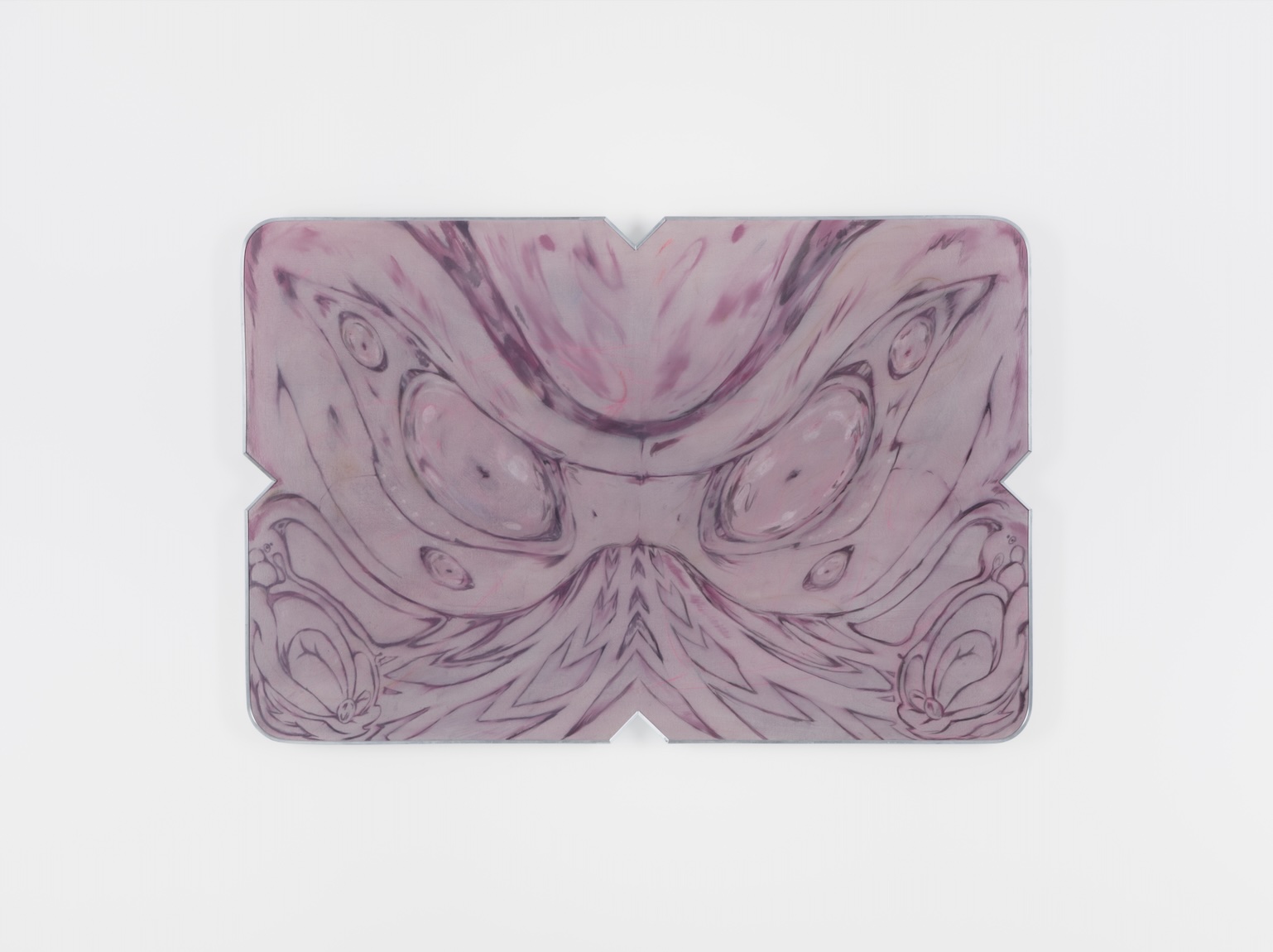
In Scott's work there’s a correspondence between ideas and forms; inseparable pairs emerge: train-caterpillar, window-painting, butterfly-signage. The latter is inspired by the logo of the Juanacatlán station on the pink line of Mexico City’s metro system, a hue that predominates throughout the exhibition. The icon has been brought into three dimensions, shaping the metal frames that house two of the paintings in the show. These structures, in turn, resemble the window frames that surround the iconic windows of our subway system. The work almost feels frosted; the glazing on the surface treatment is created in a way that mimics how glass is etched to achieve that opaque finish. In the subway, people scratch the glass with keys; the artist does it by finishing his paintings with a layer of oil.
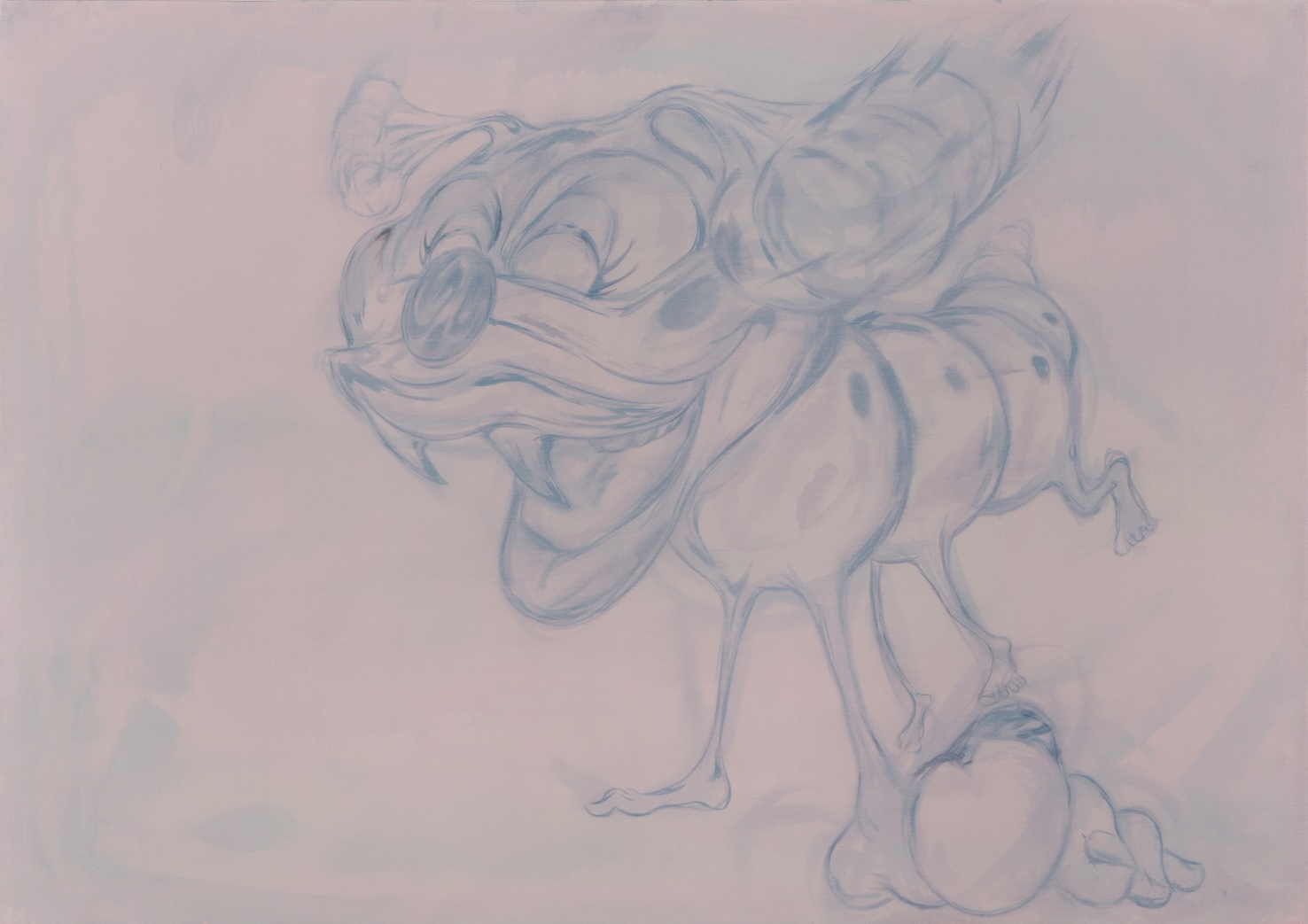
Scott’s fascination with modes of transportation—whether airplane cabins, recreated with the mastery and care that always characterize PM’s installations, eccentric roller coaster cars (somewhat dubious, like those at a local fair), or train cars—is the same fascination he has as a painter for light and movement. These two pictorial qualities are explored by the artist through the phenomenon that occurs when we stare at a fixed point while our body is in motion. The speed that vision can achieve—only possible when aboard a moving vehicle—creates saccadic movements that allow the eye to move fast enough to see a scene clearly. These intermittent movements, which occur when the eyes shift from one point to another in the visual field, are mirrored in the paintings through agile brushstrokes and smudges that spring from the depths of the mauve-colored background—a pale, bluish purple that lies between violet and pink, and plays a starring role in the exhibition.
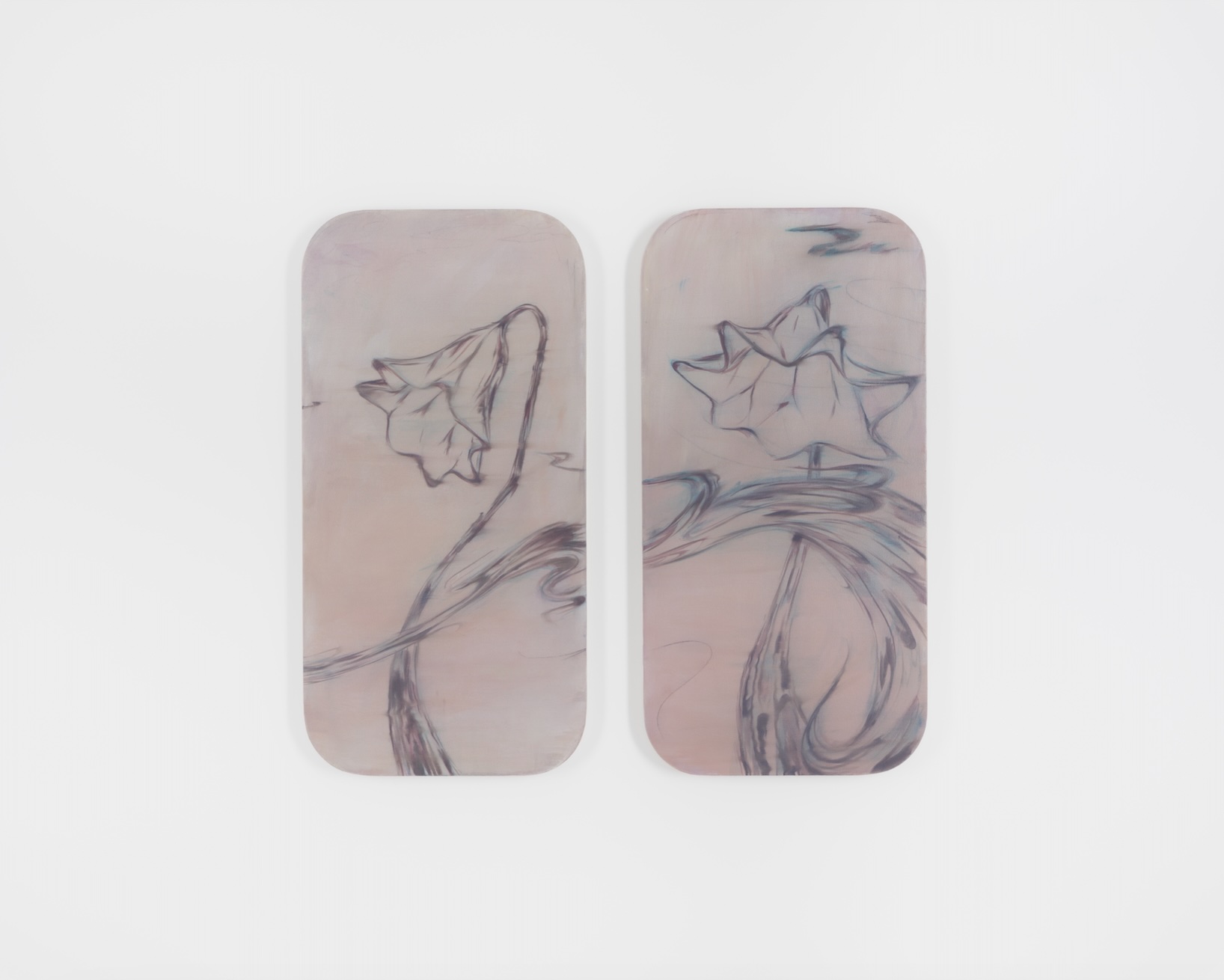
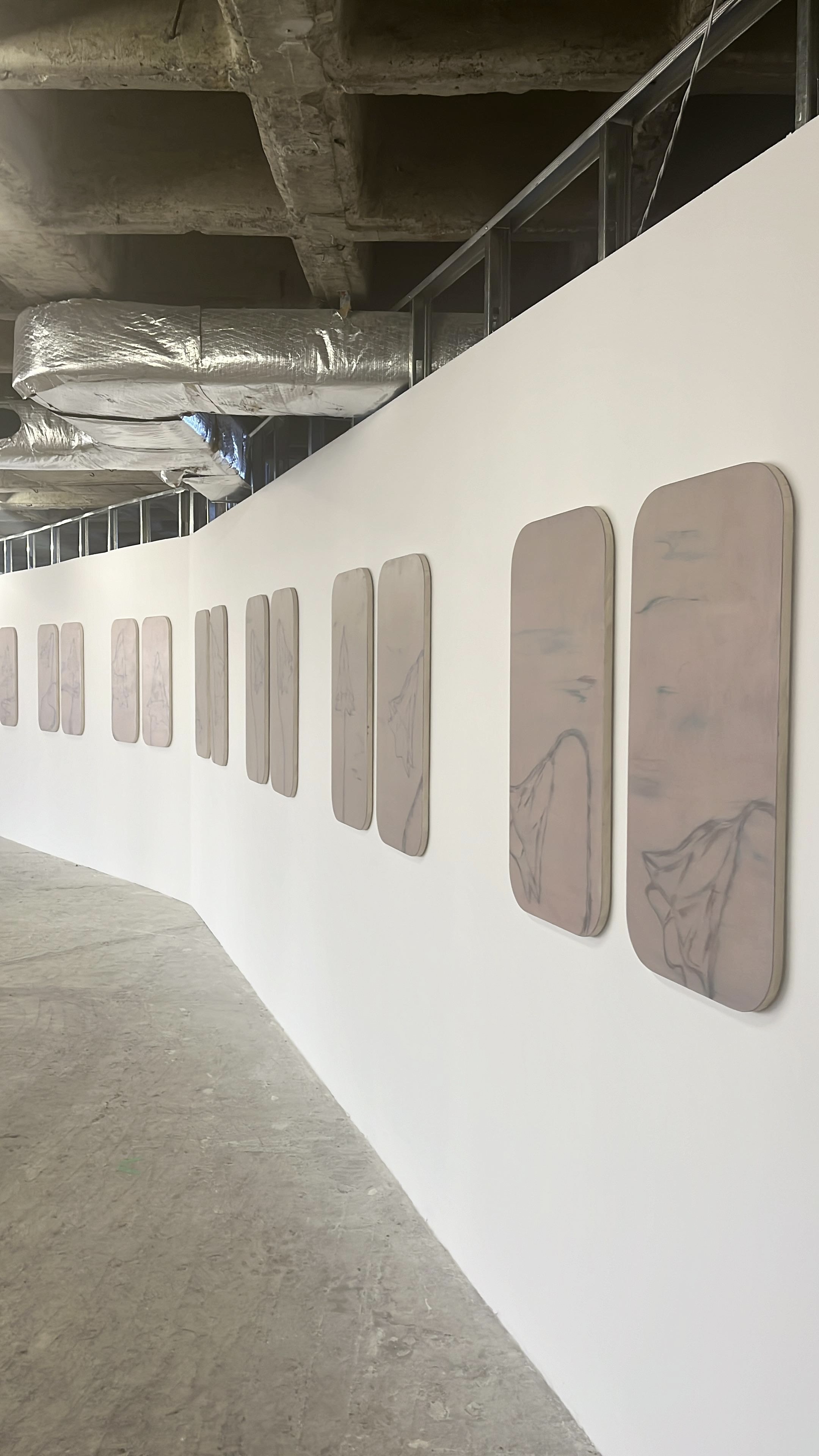
The machine-insect moves through space, appearing and disappearing. It sneaks into canvases where it doesn’t belong, subtly infiltrating the fifteen pairs of oval paintings that simulate airplane windows. The ‘worms’ quietly accompany these bell-shaped flowers, whose stems lash about like whips in the motion of their movement. They’ve created a shortcut to move from one point in space-time to another.
Translated to English by Luis Sokol
Published on February 12 2025